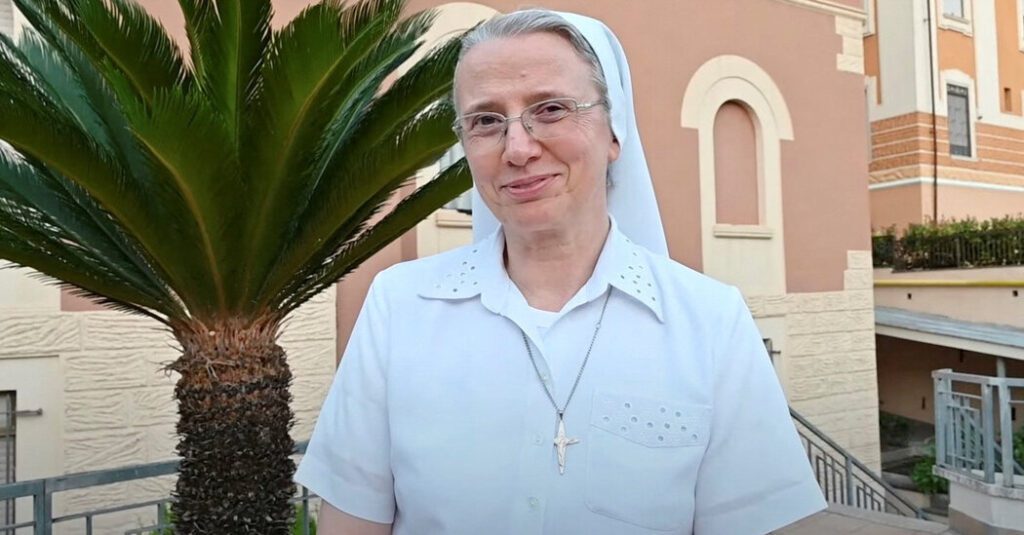Historic Appointment of Sister Simona Brambilla at the Vatican
On Monday, Pope Francis made a groundbreaking appointment by designating Sister Simona Brambilla as the head of the Vatican office overseeing religious orders for men and women. This appointment marks Sister Brambilla as the first woman to assume a top leadership role within the Holy See, overseeing a body that manages more than a quarter of the world’s priests.
A Commitment to Women’s Leadership
This decision is rooted in Pope Francis’ commitment to enhancing women’s leadership positions within the Roman Catholic Church. The Pope has taken significant steps to appoint women to high-profile roles, such as the director of the Vatican museums. Sister Brambilla’s elevation to prefect of the Dicastery for Institutes of Consecrated Life and Societies of Apostolic Life emphasizes this commitment further, as she is now heading one of the crucial departments of the Roman Curia.
Reactions to the Appointment
The news has been met with enthusiasm from various quarters. Theologian Anne-Marie Pelletier celebrated the appointment, remarking, “This is very good news… It’s something completely new.” She acknowledged the significance of this moment, highlighting the potential for change within the church’s structure.
However, the appointment comes with a caveat. Sister Brambilla will share her responsibilities with Cardinal Angel Fernandez Artime, who serves as pro-prefect or co-leader. Critics have expressed concerns that this arrangement may undermine Sister Brambilla’s authority, with some viewing it as an attempt to control the impact of her leadership.
The Role of Women in Religious Orders
Sister Brambilla will oversee a department that is predominantly focused on promoting and regulating male and female religious orders, with a notable higher number of women in these roles. Recent Vatican statistics reveal that as of 2022, there are approximately 128,500 priests associated with religious orders, alongside fewer than 50,000 brothers, but the number of women in religious orders stands at 599,228.
Historically, the Vatican department had been male-dominated, prompting complaints from religious sisters and bishops about the lack of women’s representation in decision-making roles. In a progressive move in 2019, Pope Francis appointed seven women as members of the department, subsequently revising the constitution of the Roman Curia to allow laypeople, including women, to become prefects.
Sister Brambilla: A Journey of Dedication
Sister Simona Brambilla, now 59 years old, hails from Monza near Milan. Before her religious vocation as a Consolata Missionary, she worked as a professional nurse and possesses a doctorate in psychology. From 2011 to 2023, she led her religious order as superior, showcasing her extensive experience and dedication to her faith.
Progress and Challenges
While some critics argue that Pope Francis is slow in elevating women to top decision-making roles within the church, his tenure has indeed seen improvements compared to previous administrations. A decade ago, only two women held senior positions within the Curia, whereas now there are around a dozen. Vatican News reports that from 2013 to 2023, the percentage of women employed at the Vatican increased from 19.2% to 23.4%.
Two years ago, Pope Francis made another historic decision by allowing women to vote at a bishops’ meeting intended to chart the church’s future. Although discussions surrounding women’s roles within the church have intensified, the issue of allowing women to be ordained as deacons remains unresolved.
A Positive Outlook for Women in the Church
Kate McElwee, executive director of the Women’s Ordination Conference, acknowledges Sister Brambilla’s appointment as a positive shift within the Vatican. However, she too expressed confusion regarding the co-leadership structure with the pro-prefect, indicating that hurdles still remain for women aiming for leadership roles within the Vatican.
Overall, Sister Brambilla’s appointment is a significant step forward in the ongoing journey towards greater inclusion and empowerment of women in the Roman Catholic Church.


